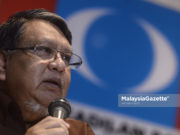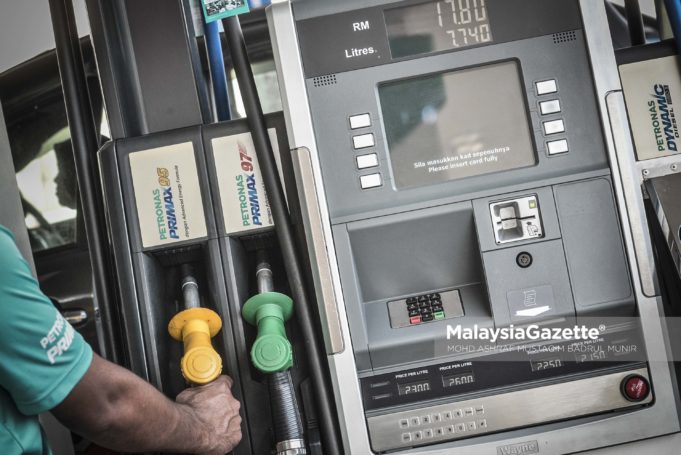By: Dr Mohd Zaidi Md Zabri
MALAYSIA’S blanket subsidies for RON95 petrol have come under scrutiny due to their significant share of the nation’s overall subsidy spending, which amounted to RM81
billion in 2023. In response, Prime Minister Datuk Seri Anwar Ibrahim announced in the 2025 Budget that the top 15% (T15) of income earners will be required to pay the prevailing market rate, while 85% of the population will continue to enjoy the subsidized price of RM2.05 per liter.
Economy Minister Rafizi Ramli later clarified that the classification for subsidies will be based on net household income rather than gross income, ensuring a more accurate reflection of a family’s financial situation. Despite the government’s goal of reducing blanket subsidies and better targeting fiscal support, the proposed RM13,000 household income threshold has sparked serious concerns. Many argue that this rigid cutoff could harshly penalize households, particularly in urban areas where the cost of living is significantly higher.
For example, a family in Kuala Lumpur may face significantly higher financial pressures than a rural household, even with the same income. Nevertheless, under the current system, both would lose subsidies, disregarding their starkly different living costs. This unfairly risks pushing urban families into deeper financial strain. To address these concerns, Malaysia could implement several practical measures proven effective in other countries.
Graduated phase-out instead of a hard cutoff
A foremost concern with the RM13,000 threshold is that it creates a harsh, all-or-nothing cut-off—pushing households just slightly over the limit off a financial cliff. Even a minor
increase in income could strip them of subsidies entirely, leaving them to face the same costs as much wealthier households. This stark “cliff effect” threatens to leave those hovering near the threshold vulnerable, as they are abruptly pushed into a higher cost bracket without the financial means to cope with the sudden loss of support.
A more effective solution would be to implement a graduated phase-out system, where subsidies taper off as income rises, preventing households from being pushed off a financial cliff. This approach ensures support is reduced incrementally, avoiding abrupt losses. Under a graduated phase-out system, households earning between RM12,000 and RM15,000, for example, would receive partial subsidies, ensuring that they are not suddenly deprived of all support. This approach allows for a smoother transition, protecting households from financial shocks as they move out of eligibility for full subsidies.
A similar model has been successfully implemented in the United Kingdom’s benefits programs, where support is gradually reduced as income increases. This method helps to avoid the sudden drop in financial assistance that often results in hardship for families near the eligibility threshold. In Malaysia, the graduated phase-out system could efficiently leverage the existing tax infrastructure, which already tracks household income. By adjusting subsidies based on real income data, the government ensures a smoother, fairer reduction, preventing abrupt financial strain for those hovering around the threshold.
Incorporating family size and dependents
Another significant factor that the current proposal overlooks is family size. Households with more dependents face significantly higher living costs than smaller households, yet
the fixed income threshold does not account for this. A single individual earning RM13,000 is likely to retain significantly more disposable income than a family of four struggling with financial burdens, such as costly early intervention programs for an autistic child. Yet, under the current plan, both would be cut off from subsidies the moment their income crosses the RM13,000 threshold, ignoring the harsh reality that the family is already stretched thin.
To make the system genuinely equitable, the income threshold must account for family size. Larger households should have higher income limits for subsidy eligibility, acknowledging their greater financial burdens. This adjustment would ensure that families with more dependents, who typically face heavier financial pressures, are not penalized by a rigid cut-off.
Malaysia could adopt a similar approach by leveraging its existing tax system, which already tracks dependents for tax relief. Integrating family size into the subsidy calculation would allow the government to account for the greater financial pressures faced by larger households. This adjustment would ensure that families with more dependents continue to receive necessary subsidies, creating a fairer system that addresses the actual economic burdens on each household, rather than applying a rigid, one-size-fits-all threshold.
Utilizing real-time income data for dynamic adjustments
Finally, the government should consider using real-time income data to make the subsidy system more responsive to changes in household financial conditions. A static threshold like RM13,000 does not account for temporary income fluctuations, such as periods of unemployment, health crises, or unexpected financial hardships. This can leave households suddenly without access to financial support when they need it most.
By using dynamic, real-time income data, the government could dynamically adjust subsidy eligibility based on a household’s current financial situation. For example, linking the subsidy system to Malaysia’s MyKad digital identity platform could allow for accurate, up-to-date assessments of household income. Such a system would ensure that subsidies are adjusted based on real-time financial realities, providing critical support to households experiencing temporary financial distress.
India’s Aadhaar system provides a model for how such an approach could work. Aadhaar ensures that subsidies are distributed based on up-to-date income data, preventing households from losing access to assistance due to outdated information. Malaysia, with its existing digital infrastructure through MyKad, is well-positioned to adopt a similar approach. Expanding the MyKad platform to include real-time income tracking would give the government the tools to make subsidy adjustments that reflect the latest financial circumstances of each household.
A call to action for fairer subsidy reforms
As Malaysia moves forward with its two-tier pricing system for RON95, it is crucial that the RM13,000 income threshold is carefully reviewed and adjusted to reflect the diverse
financial realities of Malaysian households. By incorporating graduated phase-outs, family size adjustments, and real-time income tracking, the government can ensure that the subsidy system is both fiscally responsible and socially equitable.
The goal must be to support households that genuinely need assistance, without burdening those teetering on the edge of the income threshold. By embracing these practical reforms, Malaysia can not only ease its fiscal strain but also ensure fairness.These adjustments will protect vulnerable families while still shifting subsidies away from those who no longer require them. The result will be a more just and effective system that balances fiscal responsibility with equitable support for the broader population.

The author is a Senior Research Fellow at the Islamic Economics Department, ISRA Research Management Centre, INCEIF University.

















